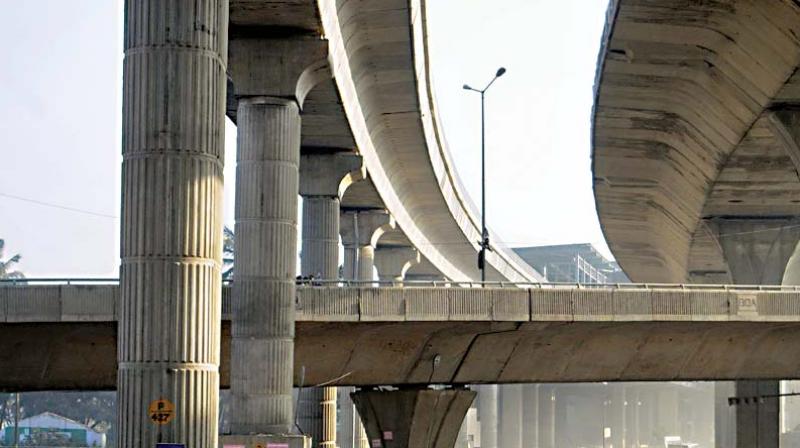Elevated corridor: A stairway to hell

The state government has proposed to build an elevated corridor over 92.2 kms with 53 entry and exit ramps running North-South and East-West of Bengaluru city. In the technical article titled ‘Sustainability analysis of the proposed elevated road corridors in Bengaluru city-A comparative scenario analysis with the Metro Rail system,’ we have looked at the proposed elevated road corridor project in Bengaluru from a scientific point of view.
The study highlights the demerits of the proposed elevated corridor in relation to the increased traffic congestion, vehicle kilometres travelled and emissions. The evaluation also highlights the merits of the elevated Metro Rail along the same corridor in terms of reducing traffic congestion, emissions and increasing the modal shift to public transport.
The study, which was based on the assumption that the proposed elevated corridor project will be completed by 2020, has found that it will only increase vehicular traffic and pollution by 2030. To come to this conclusion it considered two scenarios : The first with the elevated corridor open for the public by the year 2020 and the second, by replacing the elevated corridor with the Metro Rail along the same route.
We found that while construction of the elevated corridor will attract traffic from all directions and reduce the level of congestion on the connecting roads, it will increase the congestion on its own stretch. But if a Metro Rail is built on this route it could reduce congestion on the roads a lot more.
In fact, there is an eight per cent reduction in total system travel time in scenario 1 and 40 per cent reduction in travel time in scenario 2 when compared with a Business As Usual (BAU) scenario in 2020. Similarly, there is a 5.3 per cent reduction in total system travel time in scenario 1 and 53.4 per cent reduction in total system travel time in scenario 2 when compared with the BAU scenario in 2030.
Scenario 2 (Metro line) also sees the least amount of emissions. Although buses and the Metro Rail emit high amounts of CO2, their high occupancy levels lead to lesser per capita emissions. The per capita emissions of carbon dioxide reduced by eight per cent and 29 per cent in scenario 1 and scenario 2 respectively in the year 2020. In the year 2030 the per capita emissions of carbon dioxide increased by eight per cent in scenario 1 and reduced by 26 per cent in scenario 2 as compared to the BAU scenario.
There is also a rise of seven per cent in particulate matter(PM) in the environment, indicating greater pollution, in scenario 1 and reduction of 20 per cent in scenario 2 as compared to the BAU scenario in 2020. Similarly, there is an increase of 11 per cent in air pollutants in scenario 1 and a reduction of 23 per cent in particulate matter in scenario 2 as compared to the BAU scenario in 2030.
The total energy (fossil fuel) consumption is also likely to be higher in scenario 1 as compared to the BAU scenario and scenario 2.
From the study it is clear that the elevated corridor is not likely to improve the city’s traffic condition in any way or provide a sustainable solution for it.It will also make Bengaluru city less liveable. On the other hand, policies and infrastructure to encourage public transport systems like buses and the Metro Rail show better results in terms of reducing congestion and ensuring sustainability.
(Excerpt from the technical article titled ‘Sustainability Analysis of the Proposed Elevated Road Corridors in Bengaluru City-A Comparative Scenario Analysis With Metro Rail System written by Mobility Expert and Associate Professor, Transportation Systems Engineering, Department of Civil Engineering, Indian Institute of Science )

